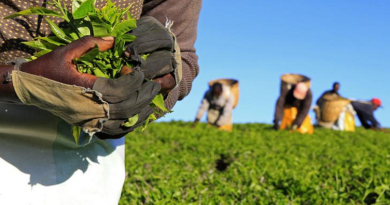Distell: Quietly winning
Distell has done something unusual.
Despite having most of its products effectively banned for a little over a fifth of the reporting period, Distell Group Holdings published a sterling set of interim results for the six months to December 31, 2020.
Group revenue grew 3.8% year on year, with volume growth of 0.8%. Profits and cash flows were equally strong, and the group’s balance sheet degeared further.
Context is important, and a glance across the major alcoholic beverage companies globally (see chart below) reveals quite how impressive this growth is against some formidable competitors.
In fact, Distell was the only major alcoholic beverage group (among this peer set) to report any volume growth through FY20, despite the bulk of its revenues coming from South Africa, a geography where alcohol was banned for a fifth of all trading days.
Read: Alcohol ban costs Distell 20% of its trading year (Aug 2020)
Source: Various company reports; * Showing volume growth from Asahi’s alcoholic beverage segment only (around 37% of group revenue); ** Showing volume growth from Kirin’s alcoholic beverage segment only (around 35% of group revenue); *** Showing volume growth from LVMH’s wine and cognac segment only (around 11% of group revenue).
Bye-bye wine, hello Savanna
Management has been cleaning up Distell, selling asset-heavy/profit-light wine farms, growing major brands such as Savanna non-alcoholic cider, and steadily building distribution globally into Africa as well as domestically.
Read: Distell’s new remuneration policy gets the nod (Oct 2020)
Furthermore, the group’s portfolio is diversified with wines, spirits and ciders. Wines and spirits in particular benefitted from more home-based consumption (spirit volumes were up 4.2% and wine volumes 5.4% but cider slipped 5.3%), while the group’s exposure into Africa certainly helped (volumes into the continent leapt 11.7% to 20.3% year on year).
The above peer set does include some groups with exposure to non-alcohol categories that dilute the value of this comparison.
Nothing is perfect. Still, a quick snapshot of these stocks’ relative valuations (see chart below) shows how the market is not rewarding Distell for its growth with a higher multiple.
Indeed, this peer set has an average enterprise value/Ebitda (earnings before interest, tax, depreciation and amortisation) of 13x with an average volume decline of 6.5% versus Distell’s of 11.9x and volume growth of 0.8%.
Read: Distell AGM: Signs of cheer (Oct 2020)

Source: Various company reports; * Showing volume growth from Asahi’s alcoholic beverage segment only (around 37% of group revenue); ** Showing volume growth from Kirin’s alcoholic beverage segment only (around 35% of group revenue); *** Showing volume growth from LVMH’s wine and cognac segment only (around 11% of group revenue).
Well-placed
Yes, Distell is much smaller than these global groups. Yes, Distell has a much higher regional concentration than these global groups. And, yes, some of the global groups (such as LVMH) have vast portfolios that are diversified away from alcoholic beverages and will naturally lower the meaningfulness of this comparison.
All that said and done, Distell is growing – and it is clear that the group is starting to win market share.
If African volume growth can continue, SA can recover, and if export growth continues, especially as duty-free becomes significant again, Distell’s prospects look exciting and there is a chance the market is not quite pricing this in yet.
* Keith McLachlan is a small cap analyst. He owns shares in Distell.
Source: moneyweb.co.za



